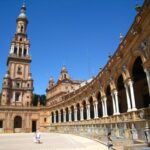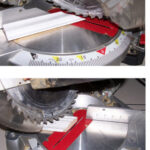To see where Christianity and Islam collided and fused, go to Cordoba, Spain, an ancient city in Andalucia, Spain’s southernmost province, situated some 75 miles (121 km) northeast of Seville. For here, in Cordoba, Romans, Goths, Jews, Moors and Christians triumphed and succumbed in succession, molding the city in their own image, to offer up a surprising amalgam of cultures and religions, and a couple of architectural gems besides.
And for first-time visitors to this colorful, sun-drenched Spanish city, here are its top attractions.
1. La Mezquita
If Cordoba is famous for one thing, it is its mosque-cum-cathedral, La Mezquita. This is among the largest mosques in the world, and singularly the most astonishing with its mad mix of Islamic, Mudejar, Renaissance and Baroque influences. Begun in 784 AD and built on the site of a Visigoth church, which in turn was built on the site of a Roman temple, the original mosque was embellished and added to over the centuries; until in the 13th century, when Christians conquered the city and consecrated the mosque to be a Christian cathedral, a chapel was added, followed in 1523 by a Christian cathedral built inside the original mosque. While the exterior of the mosque/cathedral may appear nondescript, the interior is deeply mesmerizing, with more than 800 columns with Roman capitals and horseshoe arches, patterned in yellow and red, one atop another, in a petrified forest that literally saturates a couple of dozen naves. La Mezquita is open to the public from April until June, daily except Sunday; admission fee is 6.50 euros.
2. La Alcazar de los Reyes Christianos
In another example of the clash of Christianity and Islam, La Alcazar de los Reyes Christianos, a Gothic fortress cum royal residence, stands atop a Muslim castle, no less. The Alcazar was begun in 1327 under Alfonso XI, and was later on the residence of Catholic monarchs Ferdinand and Isabel who, it is claimed, saw Christopher Columbus off on his trip to the New World from there. From the battlements of the fortress, which overlook the Guadalquivir, there are good views of Puente Romano, the Roman Bridge built by Emperor Augustus. The fortress, located at Campo Santo de los Martires, is open daily. Admission fee: 2 euros.
3. Cordoba’s Synagogue
Cordoba’s Synagogue, representing a Mudejar work that dates from 1315, is the last of its kind in existence in southern Spain. Of particular interest here are the floral motifs and epigraphs on the interior walls that reference psalms and the Song of Songs. The synagogue is open daily.
4. La Casa Andalusi
La Casa Andalusi, located at Judios 12, is a showcase of the elegant living quarters of Al-Andalus. Here you can visit an ivory-colored patio with a pebbled mosaic floor and also a basement with traces of the Visigothic era. There is a room dedicated entirely to the Moorish culture at the casa as well, displaying Arabic coins, clothing and artworks, and an early-day printing press that was used to print the Koran during that period. The museum is open daily, and there is an admission fee of 2.50 euros per person.
5. Museo Arqueologico
In eight fully-stocked rooms on two levels, the Museo Arqueologico exhibits prehistoric and Roman-era artifacts such as coins, sculptures and mosaics, as well as 4th- and 8th-century Visigothic and Muslim relics. The museum is located at Plaza Jeronimo Paez 7, and open daily, except Monday. Museum admission is 1.50 euro each.




